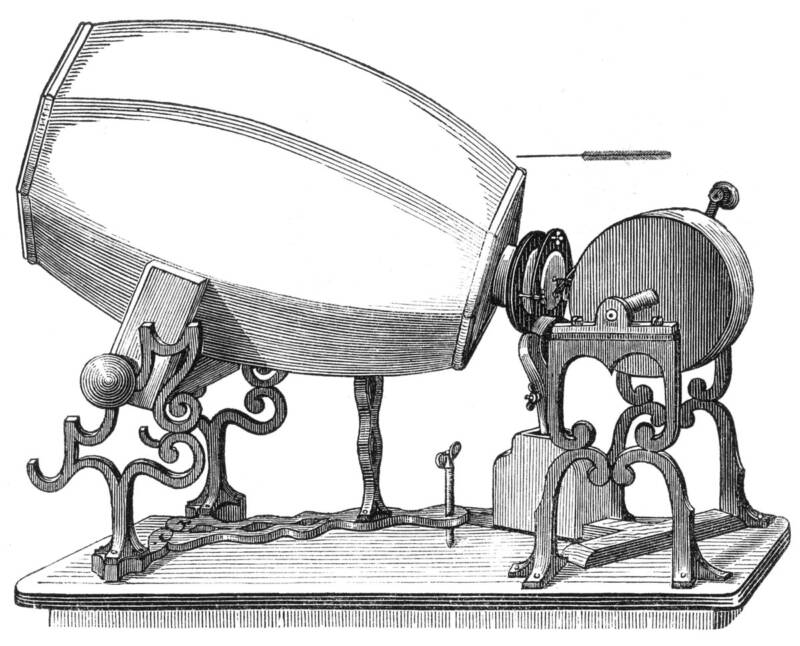Édouard-Léon Scott De Martinville And The First Recording Of A Human Voice

Public DomainThe phonautograph, which captured one of the very first weirdest sounds.
Two decades before Thomas Edison unveiled the phonograph to the world, a French inventor named Édouard-Léon Scott de Martinville built the phonautograph, a device used to visualize recorded sound by inscribing the vibrations — now known as sound waves — onto paper.
De Martinville, however, missed one key component that robbed him of Edison’s status as the man to invent a device for listening to recorded sound: he never bothered to listen to his recordings back.
It makes sense that he would neglect this, though. He patented the phonautograph in 1857 — 19 years before Alexander Graham Bell patented the telephone.
The idea of listening to recorded sound simply didn’t exist.
Many, many years later, in 2008, de Martinville’s recordings were finally brought to widespread attention when the French organization First Sounds successfully played back an 1860 recording of his.
The recording is of a person singing the words, “Au clair de la lune, Pierrot repondit.”
The lyrics are from an 18th-century French folk song which, in English, translates to: “In the moonlight, Pierrot answered.”
And even though we can easily explain the source of the recording, the primitive technology used to capture it resulted in a genuinely creepy, warbled sound that would fit well in the background of any horror film.





